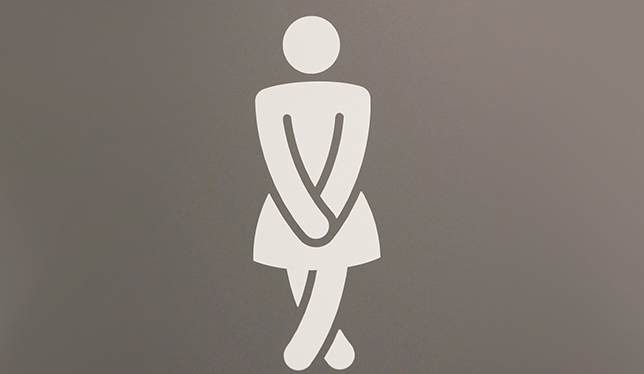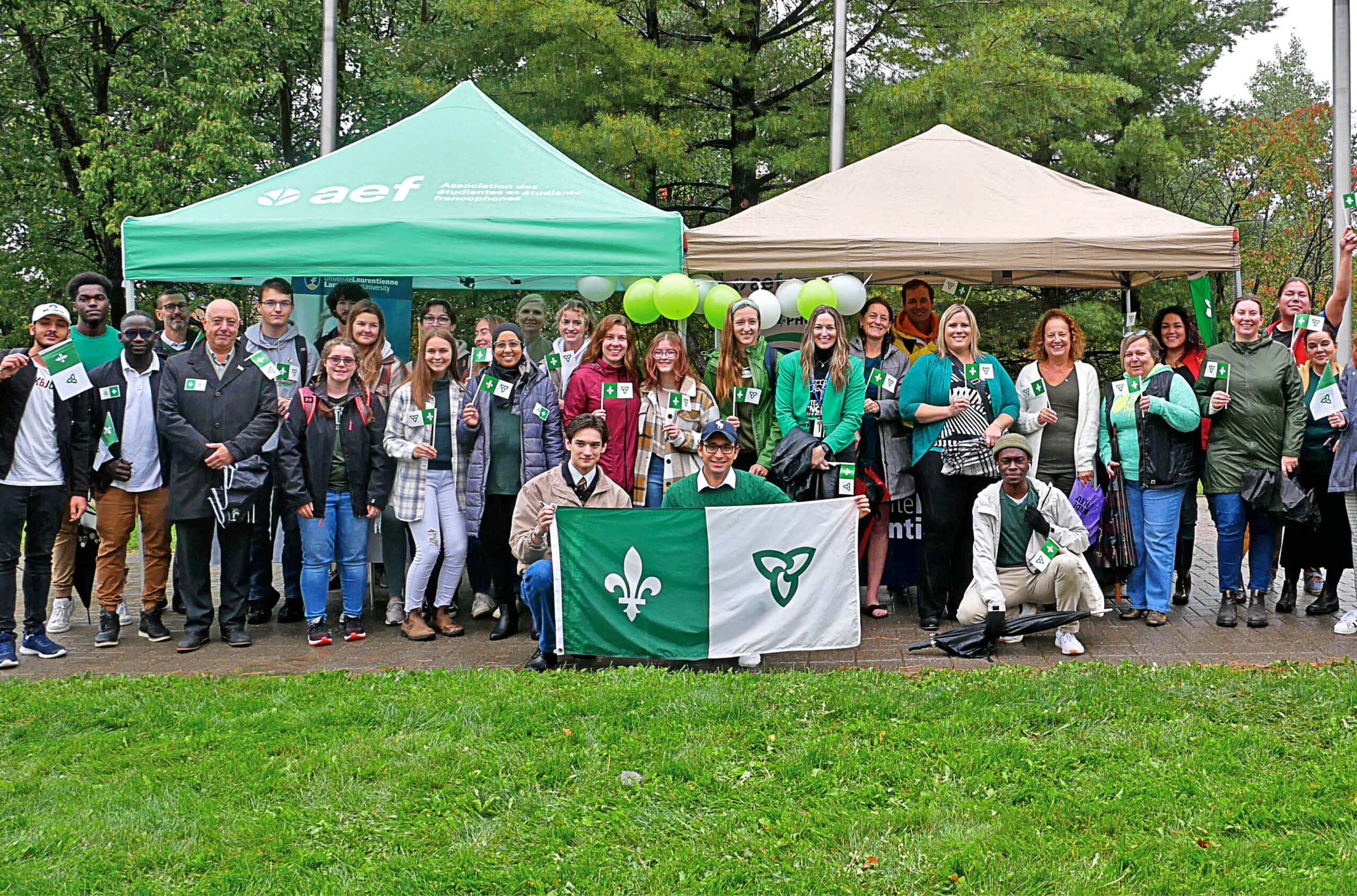Canada’s engineering schools suffer from a lack of ‘potty parity’
A dearth of women’s washrooms in our outdated engineering buildings leaves female students scrambling.

If you’ve seen the movie Hidden Figures (which highlights the stories of African-American female mathematicians at NASA in the 1960s), you’ll recall the sequence where the lead character Katherine Johnson is forced to run half a mile from where her desk is situated to the only “coloured female” washroom each time she needs to use the toilet. The entire ordeal feels appalling, and with the period clothing and language used in the film, it seems very much like an embarrassing part of our collective past. But, in truth, similar stories happen to women every day in engineering buildings across the country. At this very moment, the education of female engineering students’ is disproportionally affected by the lack of sex-appropriate washrooms in the outdated architectural design of the buildings they occupy.
“Potty parity” – where there is an equal number of public toilet facilities for both men and women – has sparked international discussion, motivated by the infrastructure built in a socially archaic time, when designers didn’t consider females in the labour force outside of very limited capacities. So why aren’t we talking about the radiating effects it has when, within the very buildings we are training the future builders, we still treat females as second-class?
Of the 10 largest engineering schools in Canada, an overwhelming majority of their main engineering buildings were built in the late 1950s and early 1960s. At the time, a lack of women’s washrooms may have been justified as female enrolment in engineering did not break one percent in Canada until the mid-1970s. Resultingly, any female bathrooms located in the building would have been only for the consideration of the handful of secretaries on staff.
While an argument can be made that some campuses have had renovations and auxiliary buildings added more recently, the motivator behind these is often increased lab space to generate money through research grants and industry partnerships. These sorts of spaces are not the ones average undergraduate students will be availing themselves of or spending much time in. So, while money is being spent on updating campuses, it’s not going towards updates that could seriously (and simply) benefit women undergraduate students. It seems harder to market the female engineering student’s equitable desire to pee conveniently.
I completed my undergraduate degree in engineering and can think of numerous times I was forced to actively weigh the pros and cons of making a trip to the bathroom during lectures or between classes, due to the unnecessary consequences it would create. Often, in an undergraduate program, classes are in multiple buildings, meaning students are running across campus in the 10 minutes between one class ending and another beginning. When you exit out of a 150-person lecture hall, and the only women’s washroom in the vicinity has two stalls, using the washroom before the next class isn’t even an option. After a full eight-hour day with a standard course load of five to six courses and three-hour labs, having to keep thinking about when to use the washroom begins to take a toll on students mentally and physically.
Recent studies have found that women take up to two times longer in the washroom than men. Some of this is due to anatomy (having to pee more frequently, sitting down to pee, menstrual cycles) and some is due to systematic patriarchy (our clothing and undergarments take more time to undo). Frankly women may need proportionally more washroom space than males, let alone an equal amount.
This is all notwithstanding the numerous health effects of making deliberate attempts to reduce needing to go to the washroom, such as being chronically dehydrated from intentionally limiting fluids, using pads or tampons longer than recommended (potentially increasing the risk of infection and toxic shock syndrome), or even just “holding it in” (increasing the risk of developing a UTI).
The national average percentage of women studying engineering is still low – hovering at around 19 percent for the last decade – and researchers frequently cite as a major reason for this is that women in engineering lack a “sense of belonging” within engineering spaces and culture. So, I’ll ask: how could anyone possibly claim we are trying to increase female participation in engineering when the basic needs of our female engineers are being ignored?
In Hidden Figures, the bathroom pilgrimages end when the white-man hero knocks down the literal barrier (a sign specifying the colour/gender of the washroom), signifying that NASA has finally reached the modern day where gender alone is the distinguisher for washrooms. There has yet to be such a moment for our women engineering students, who remain educated in the relic buildings that were not built for them, nor have accommodated any real change for all to feel welcome there. The prioritizing of space for washrooms might not feel as glamorous to universities as a multi-million-dollar new lab, or a remodeled design space, but in consistently overlooking the basic rights and needs of every woman within the program, universities are demonstrating that they do not care about promoting women in the profession. And while there is growing discussion of the purpose of dividing washrooms along gender lines at all, the interim situation remains: all engineering students deserve the right to be able to pee equitably.
Lori Wareham, B.Eng., is a Master of Public Policy candidate in the Johnson Shoyama Graduate School of Public Policy at the University of Saskatchewan.
Featured Jobs
- Business – Lecturer or Assistant Professor, 2-year term (Strategic Management) McMaster University
- Veterinary Medicine - Faculty Position (Large Animal Internal Medicine) University of Saskatchewan
- Psychology - Assistant Professor (Speech-Language Pathology)University of Victoria
- Canada Excellence Research Chair in Computational Social Science, AI, and Democracy (Associate or Full Professor)McGill University
- Education - (2) Assistant or Associate Professors, Teaching Scholars (Educational Leadership)Western University















Post a comment
University Affairs moderates all comments according to the following guidelines. If approved, comments generally appear within one business day. We may republish particularly insightful remarks in our print edition or elsewhere.
7 Comments
The 2018 International Building Code, Section 2902.1.2 was created for all-gender, single-user toilet and bathing rooms – helps potty parity and much more.
“Recent studies have found that women take up to two times longer in the washroom than men. Some of this is due to…systematic patriarchy (our clothing and undergarments take more time to undo).”
Cite me a source. This is dubious.
As the previous poster suggest, perhaps rather than solve an old problem that is long overdue for attention, we might look a bit ahead to see if we can also solve new and emerging problems. I was recently in Europe, where many washrooms are very different than in North America. The most striking difference is that a lot of them are non-gendered. In some cases individual stalls have male/female designations (wash basins are 100% shared). In others, the stalls are not labeled at all. This addresses an issue not raised in this article of how non-binary gendered folks will have equitable access. There are some universities in Canada that have already moved in this direction. At the student union building at the University of Victoria there is a non-gendered washroom that has both stalls and (discreetly tucked away behind a partition) urinals, presumably based on the assumption that this provides faster throughput for everyone. Segregating washrooms inevitably means there has to be over-capacity in order to deal with load balance issues (such as visitor day when lots of high school women are invited to hear about engineering programs in university). Integrated washrooms are like single-queue service at banks and other businesses — inherently unbiased.
Urinals do provide faster throughput…how is this an assumption?
How do women’s pants and underwear take more time to undo due to “systematic patriarchy”?
This article is pandering nonsense.
How does “holding it in” cause a UTI?
I wouldn’t dismiss the whole article on the basis of one line, but the “systematic patriarchy” line surely (and unnecessarily) alienated more readers than it gained supporters.
And this: “has finally reached the modern day where gender alone is the distinguisher for washrooms” is a much better example of thinking that is stuck in the past. As others have pointed out, removing gender specificity accommodates all, and it’s not terribly difficult to have sufficiently-private urinals and numerous stalls with common sinks. A few single-person washrooms can be available for those needing a space to change or unwilling to bend their minds around the idea of peeing in the same room as a different gender.